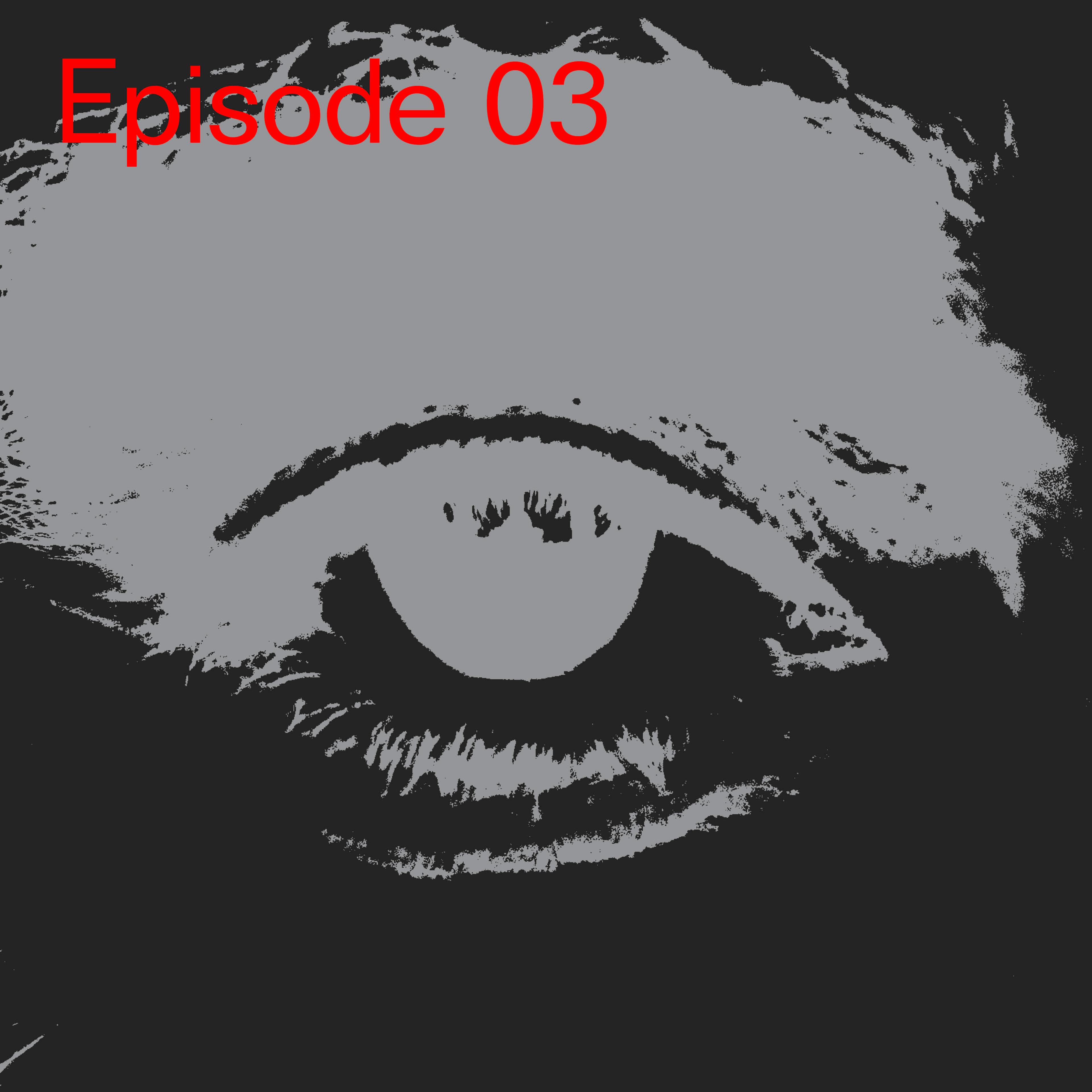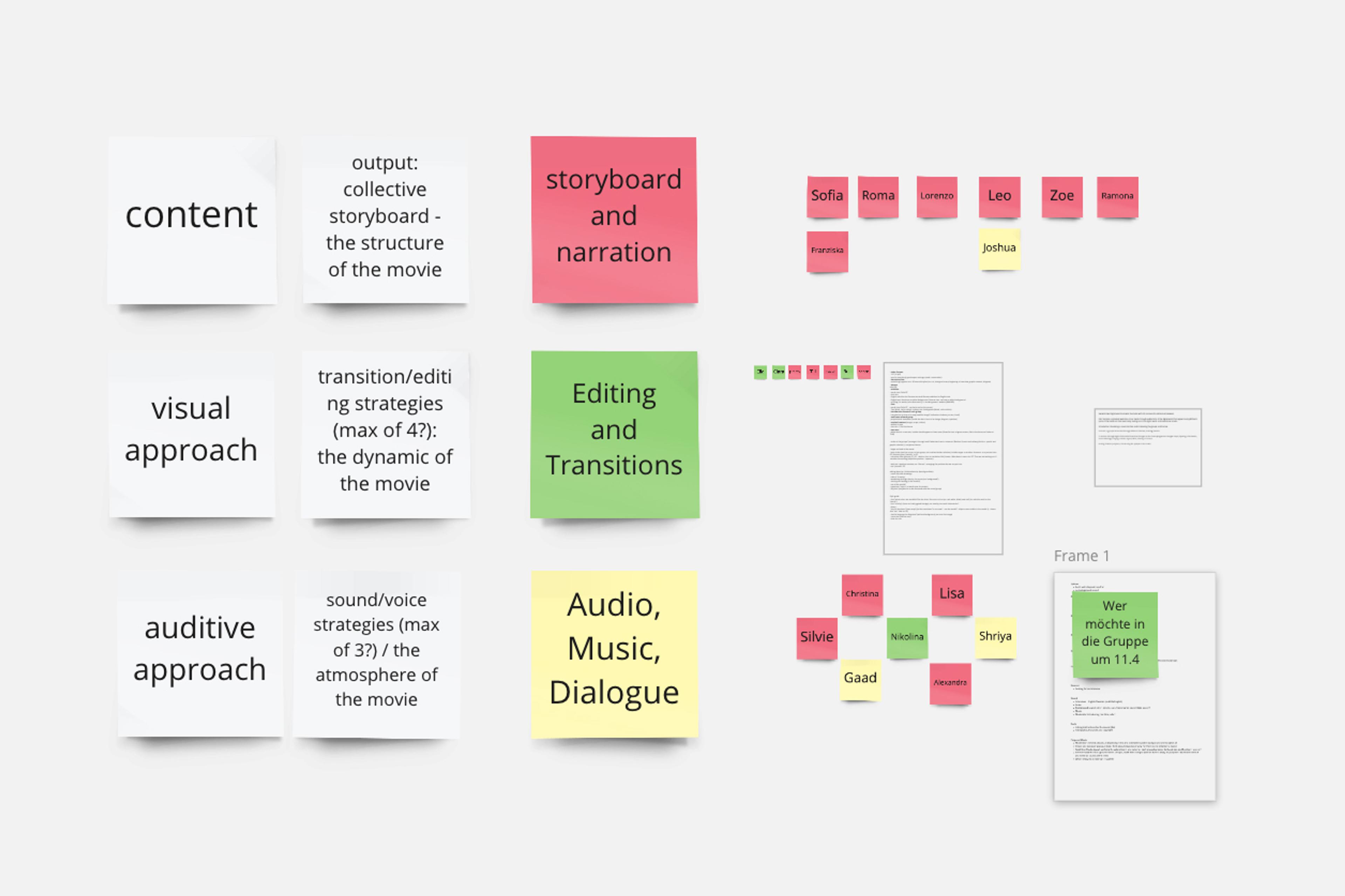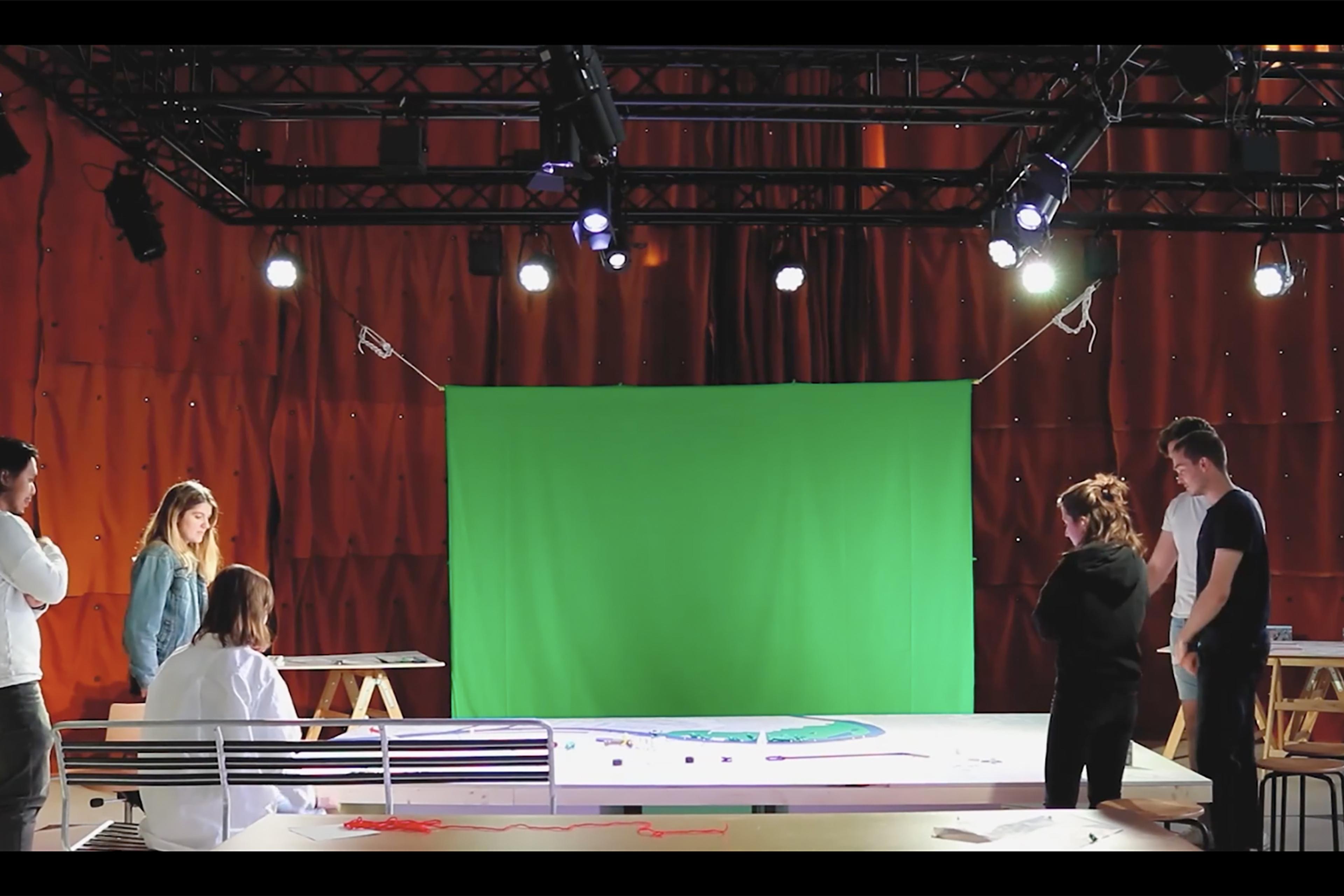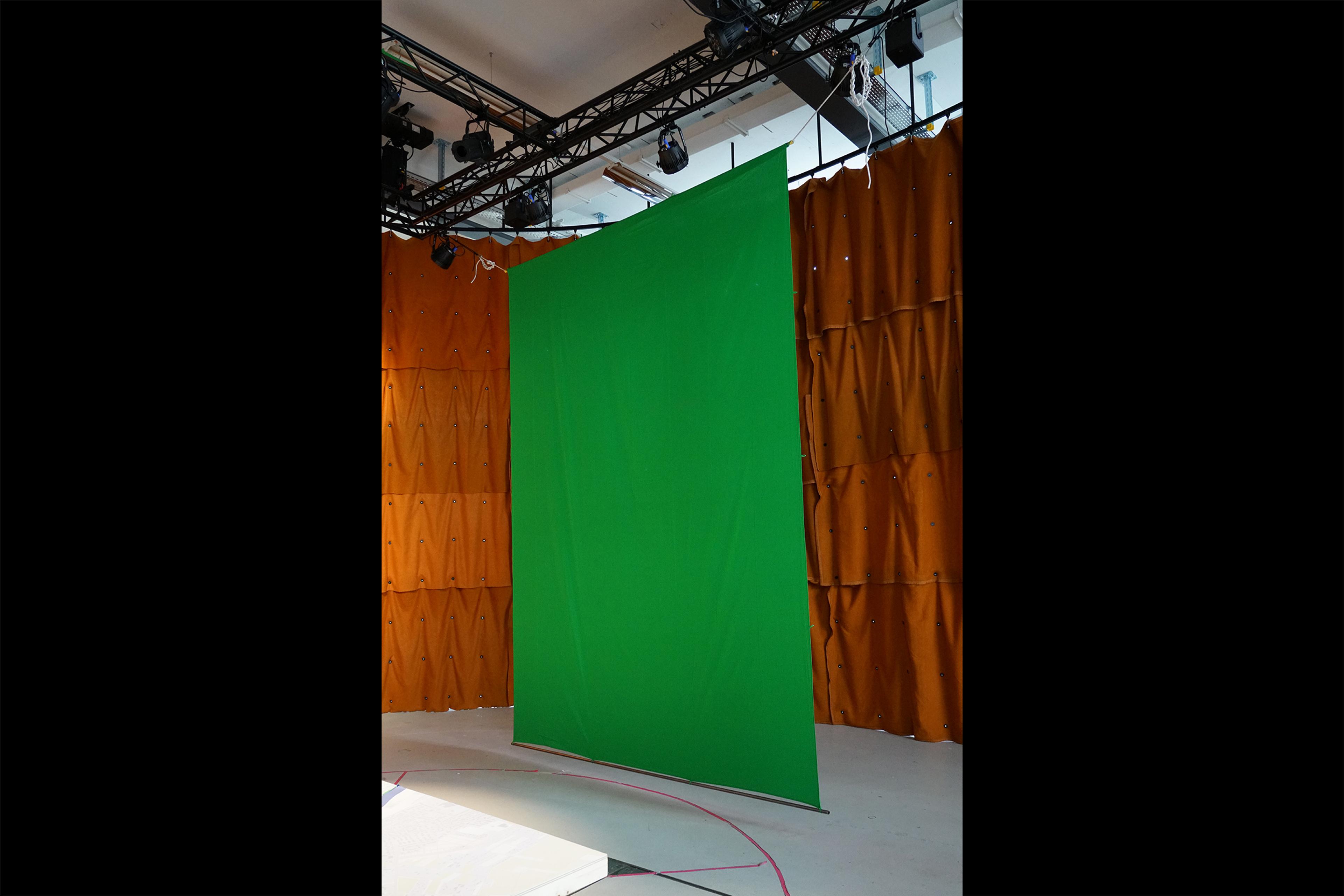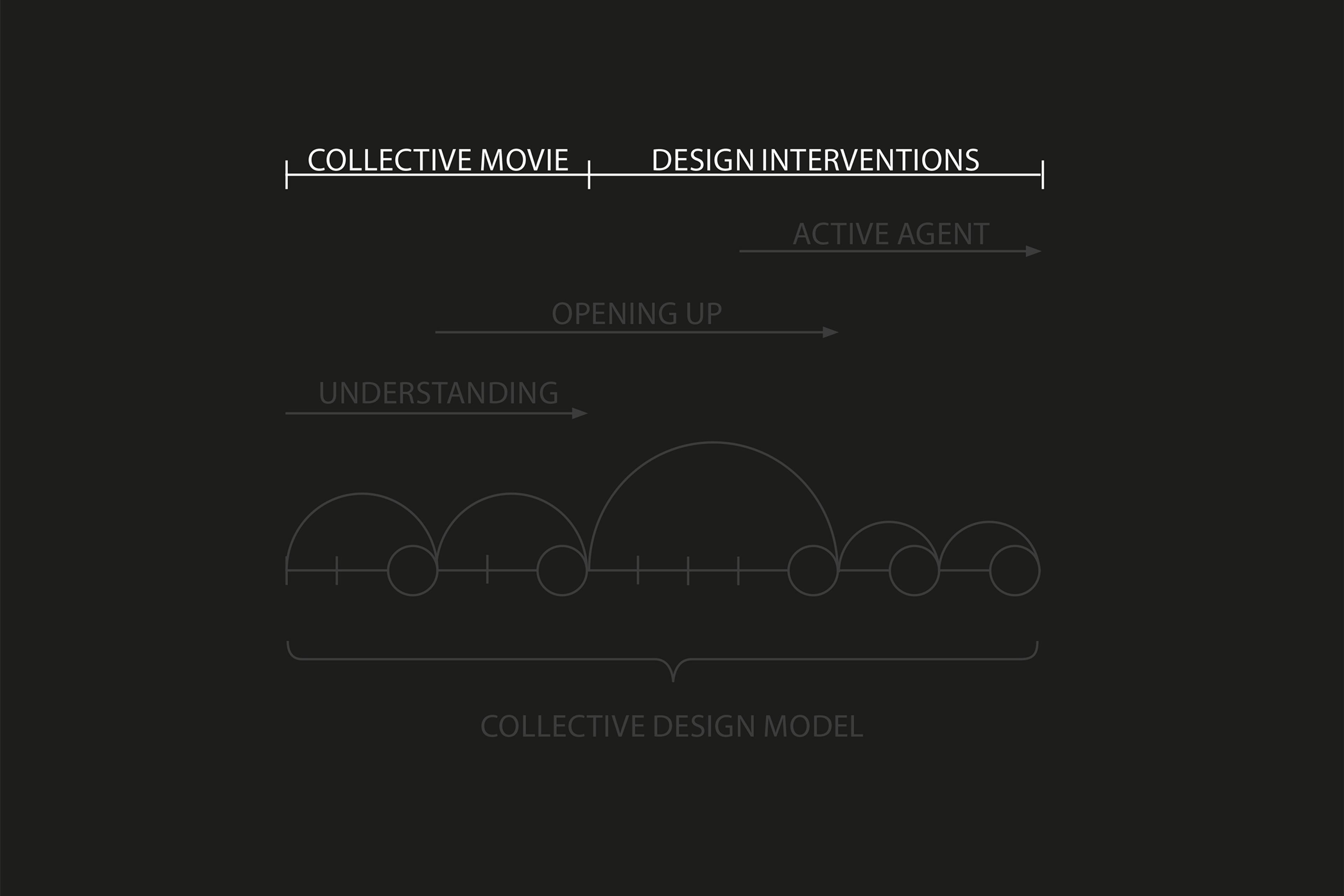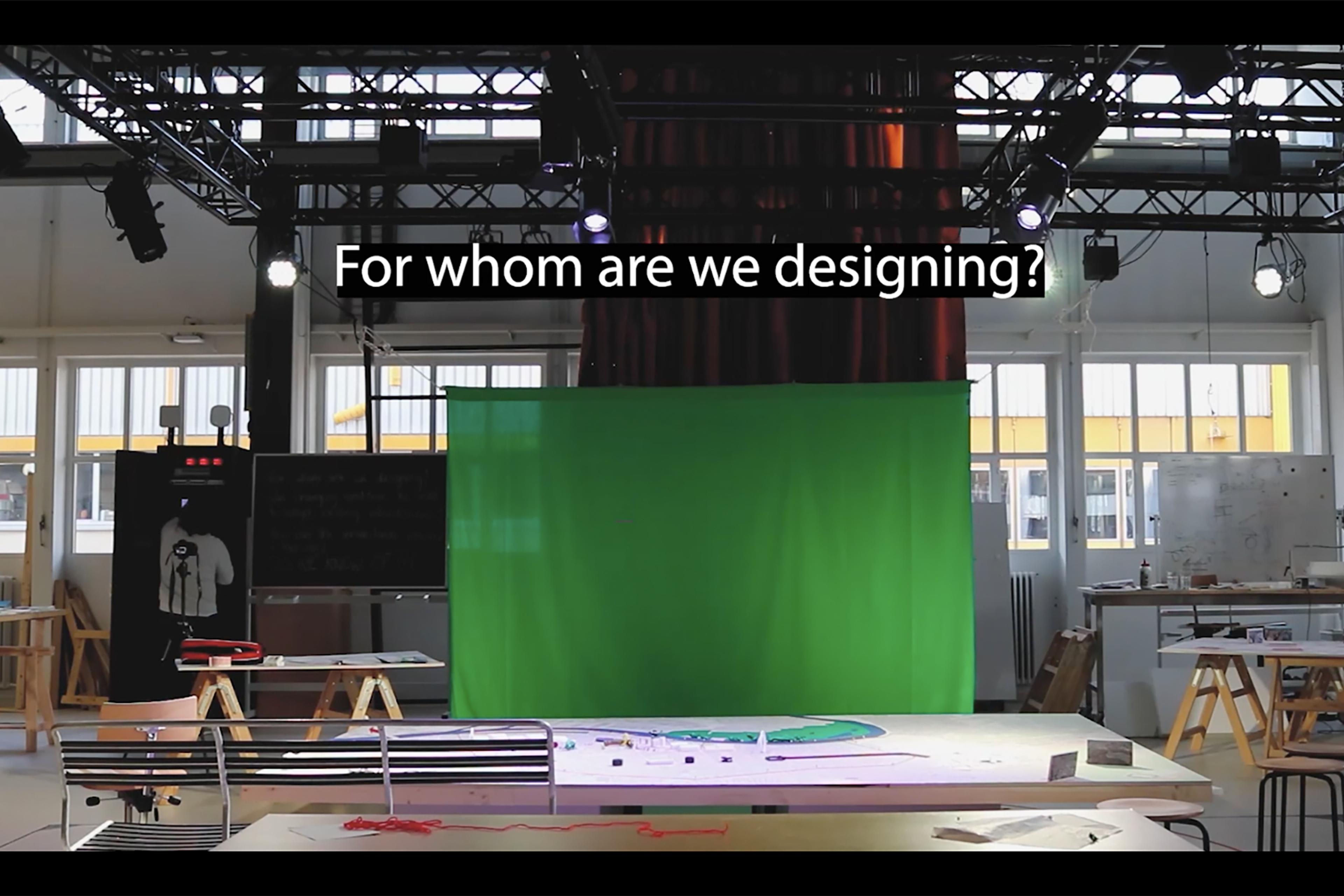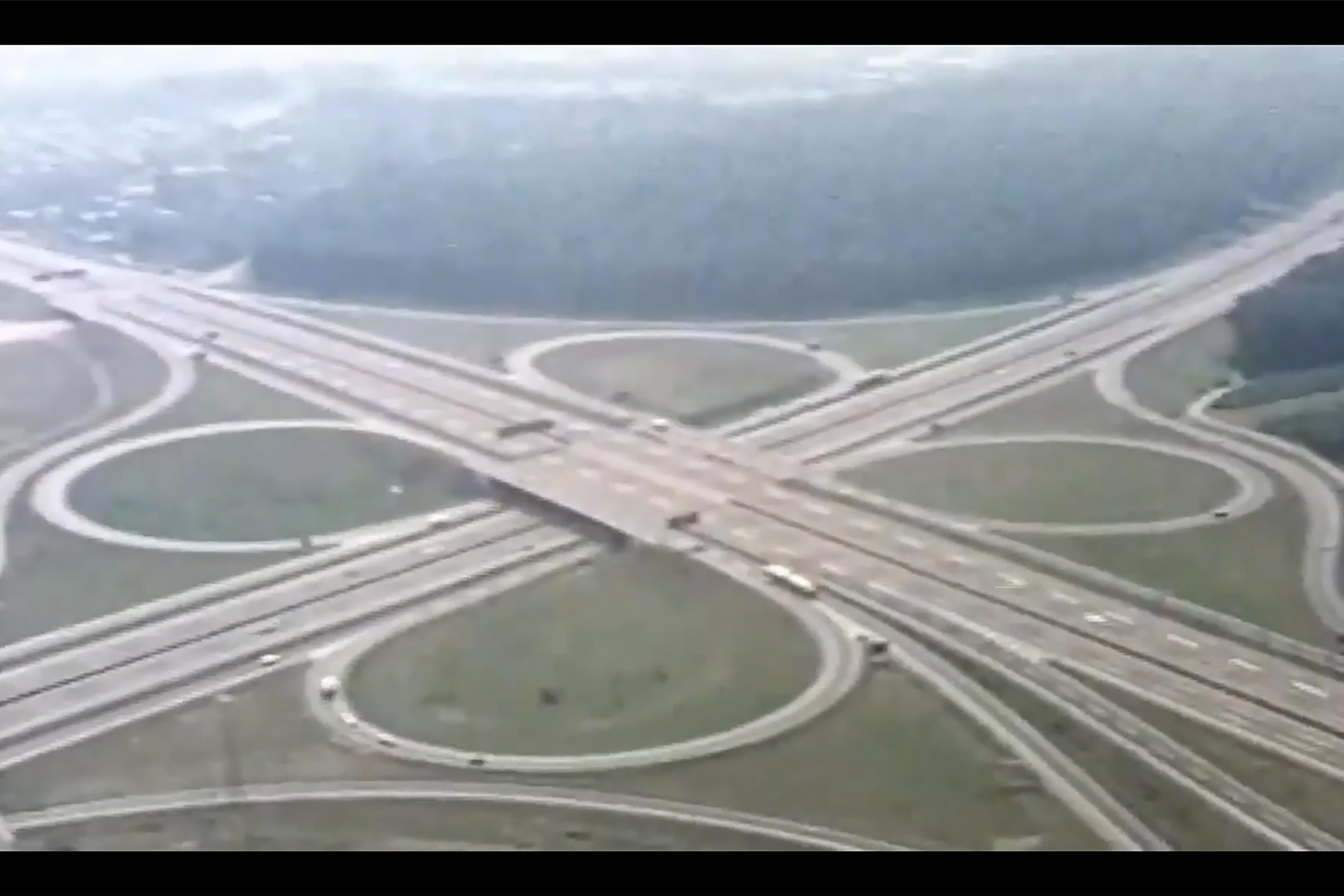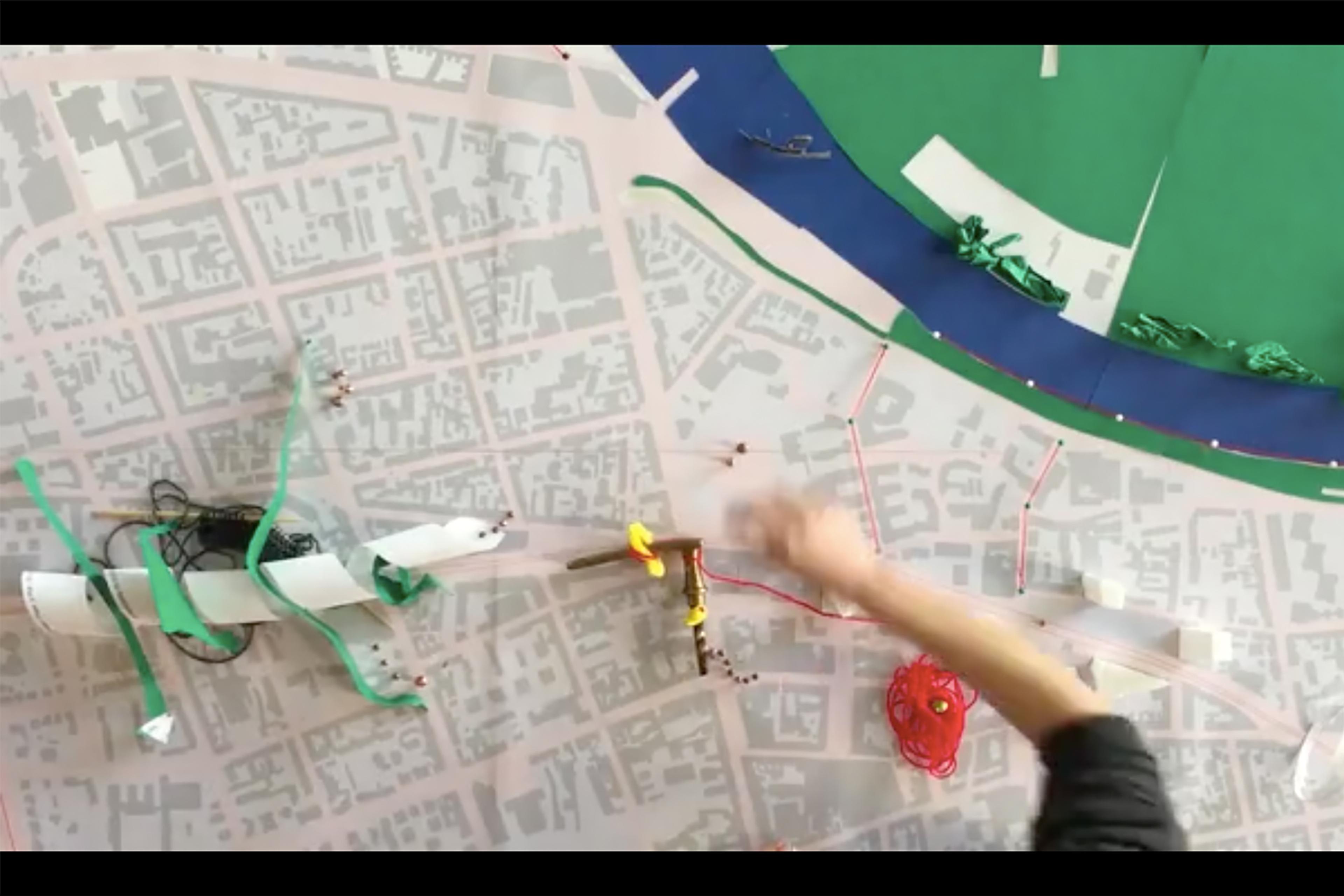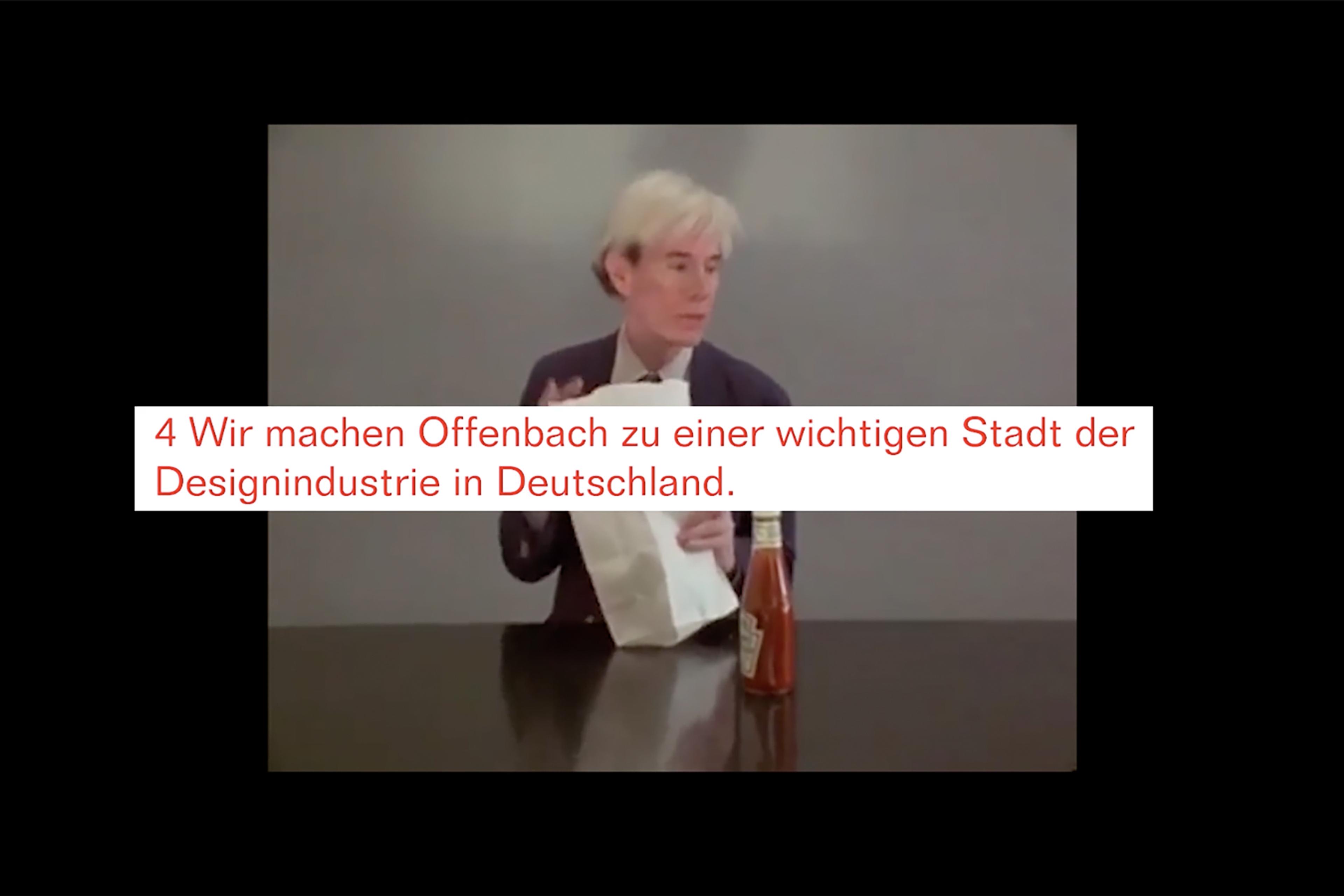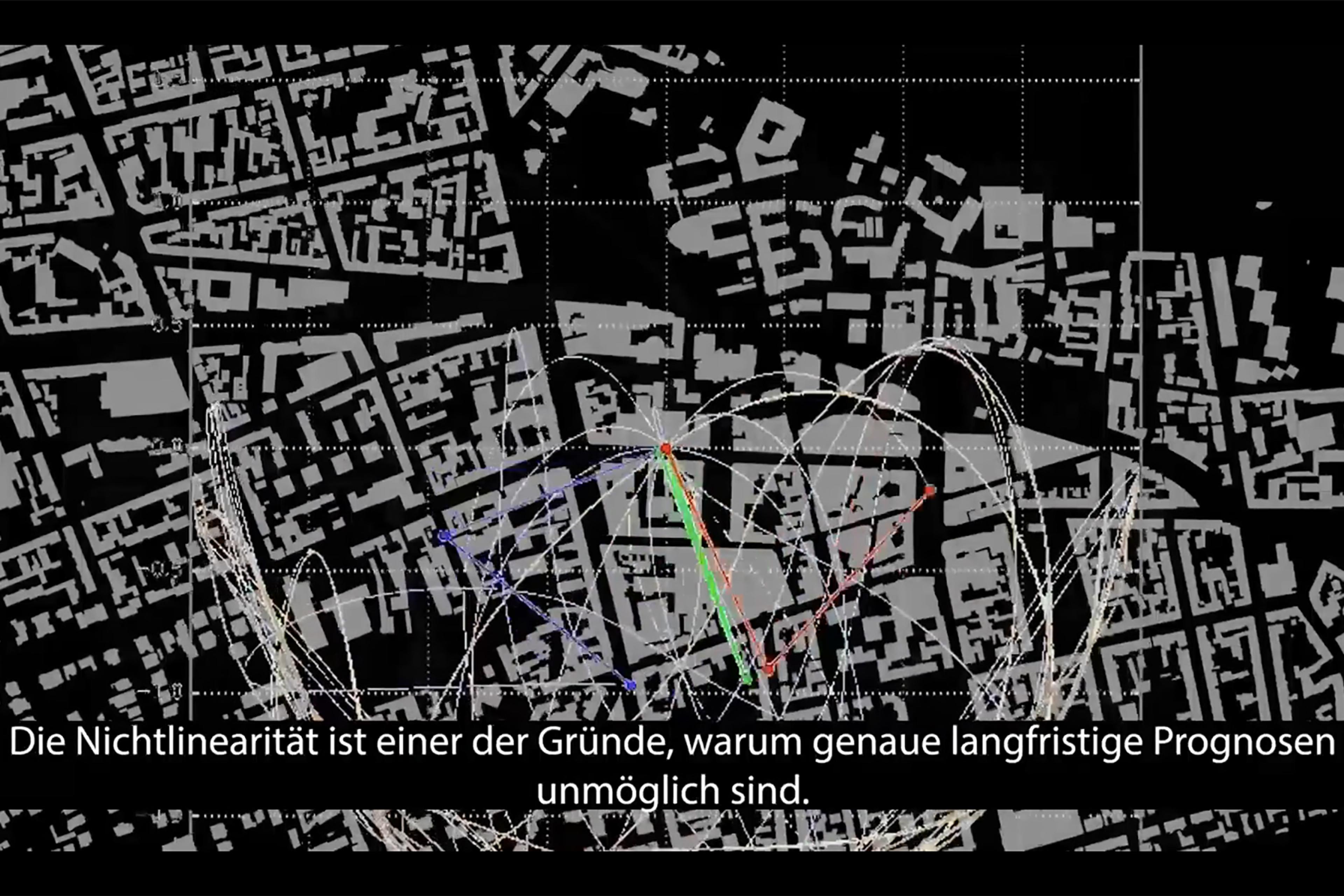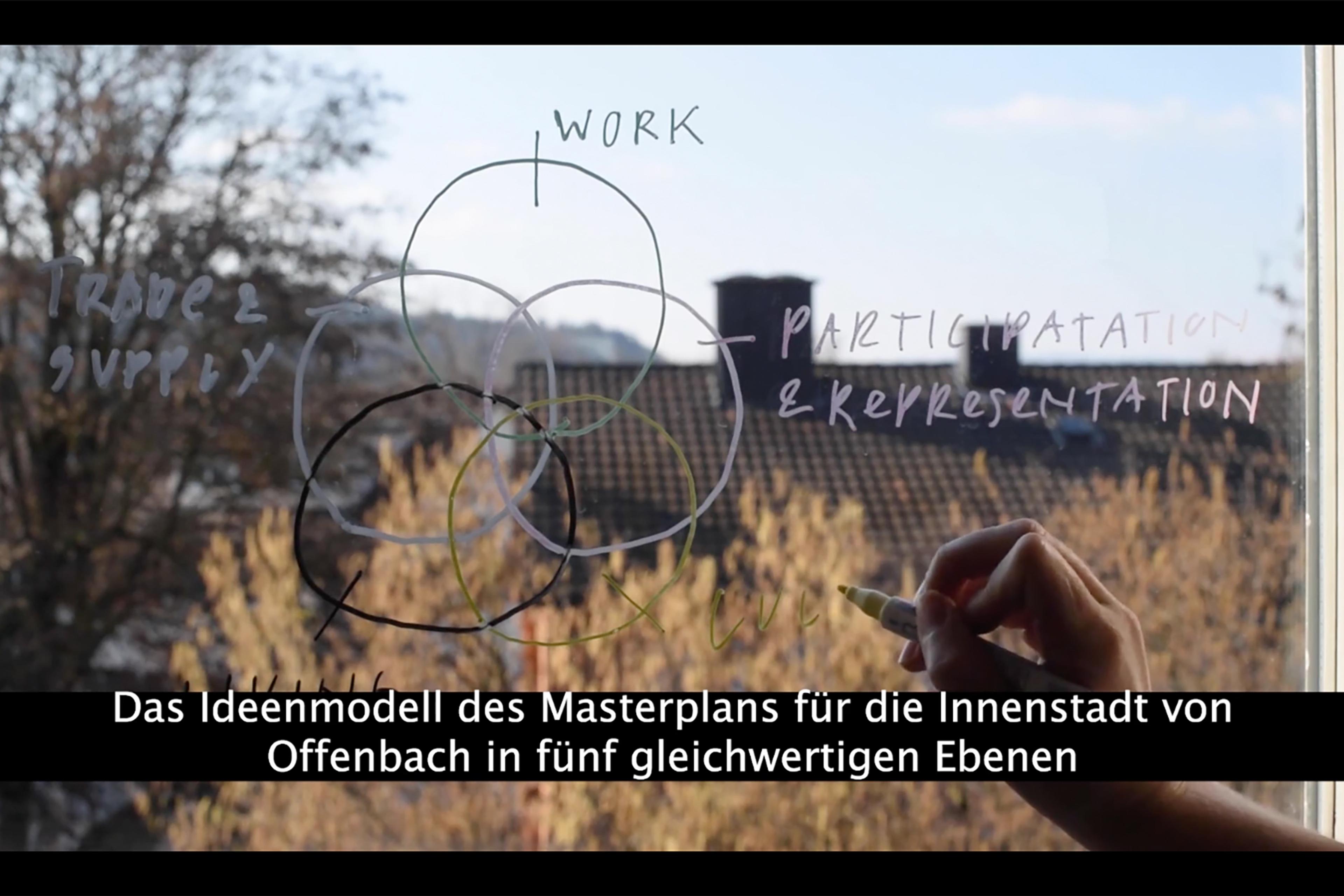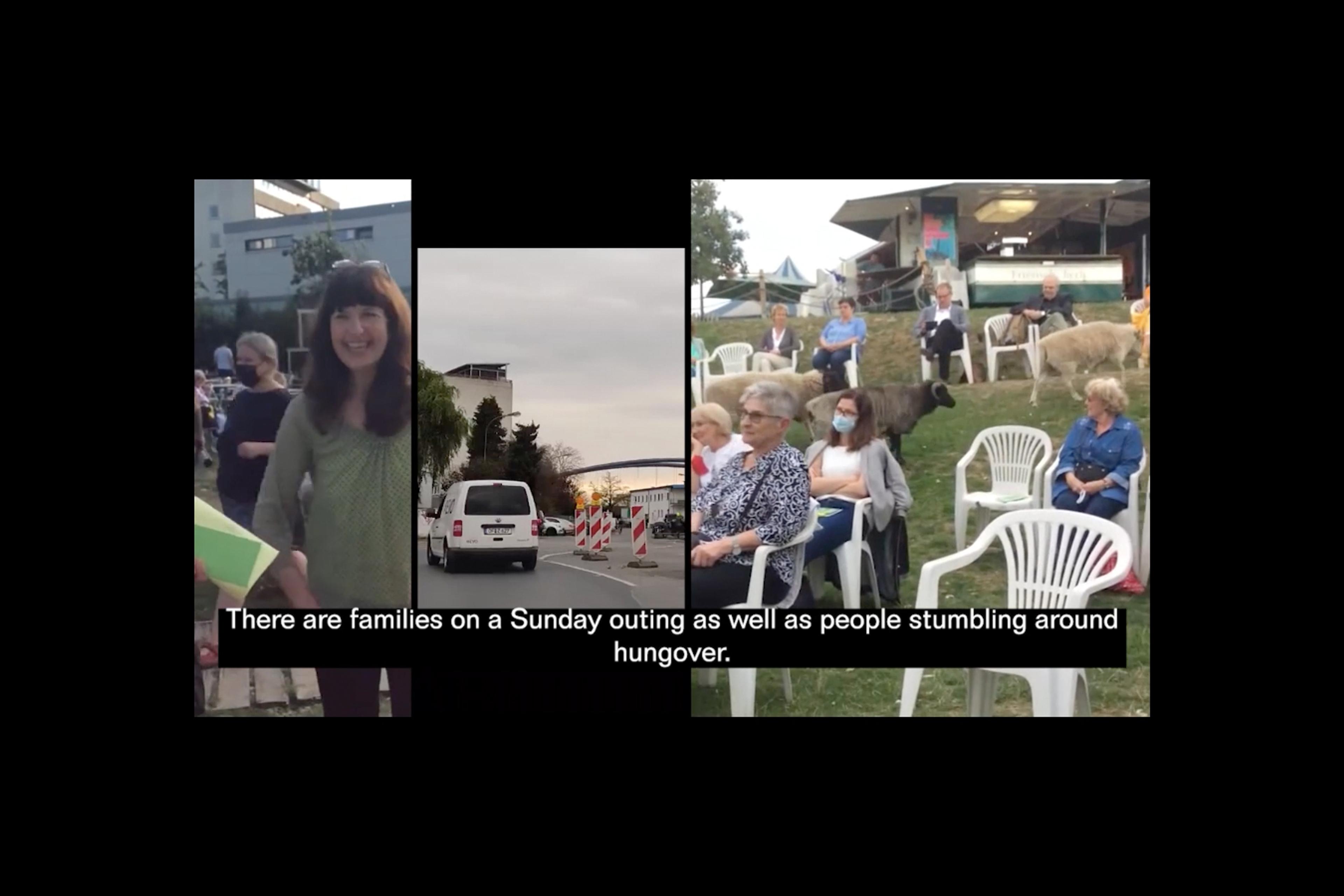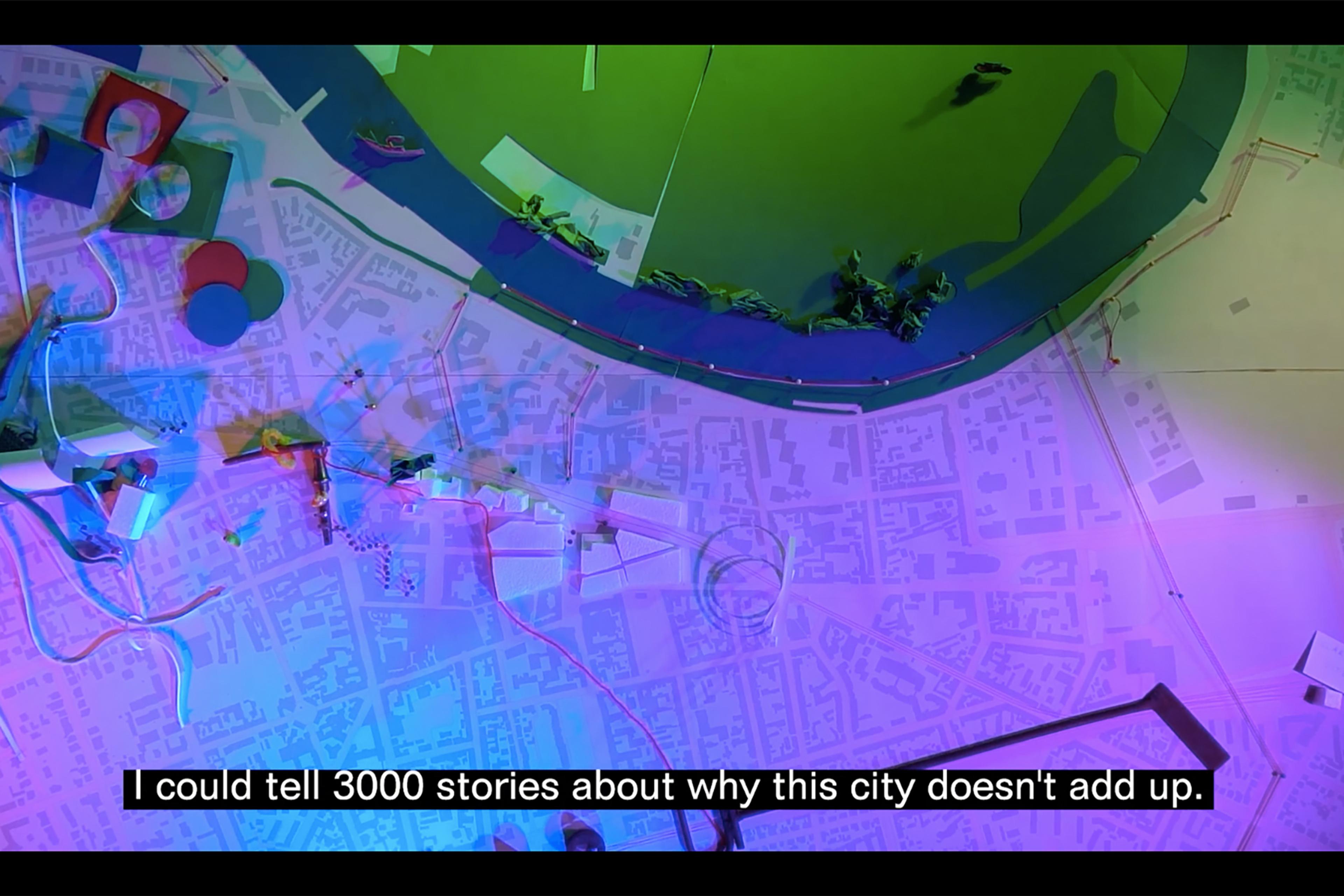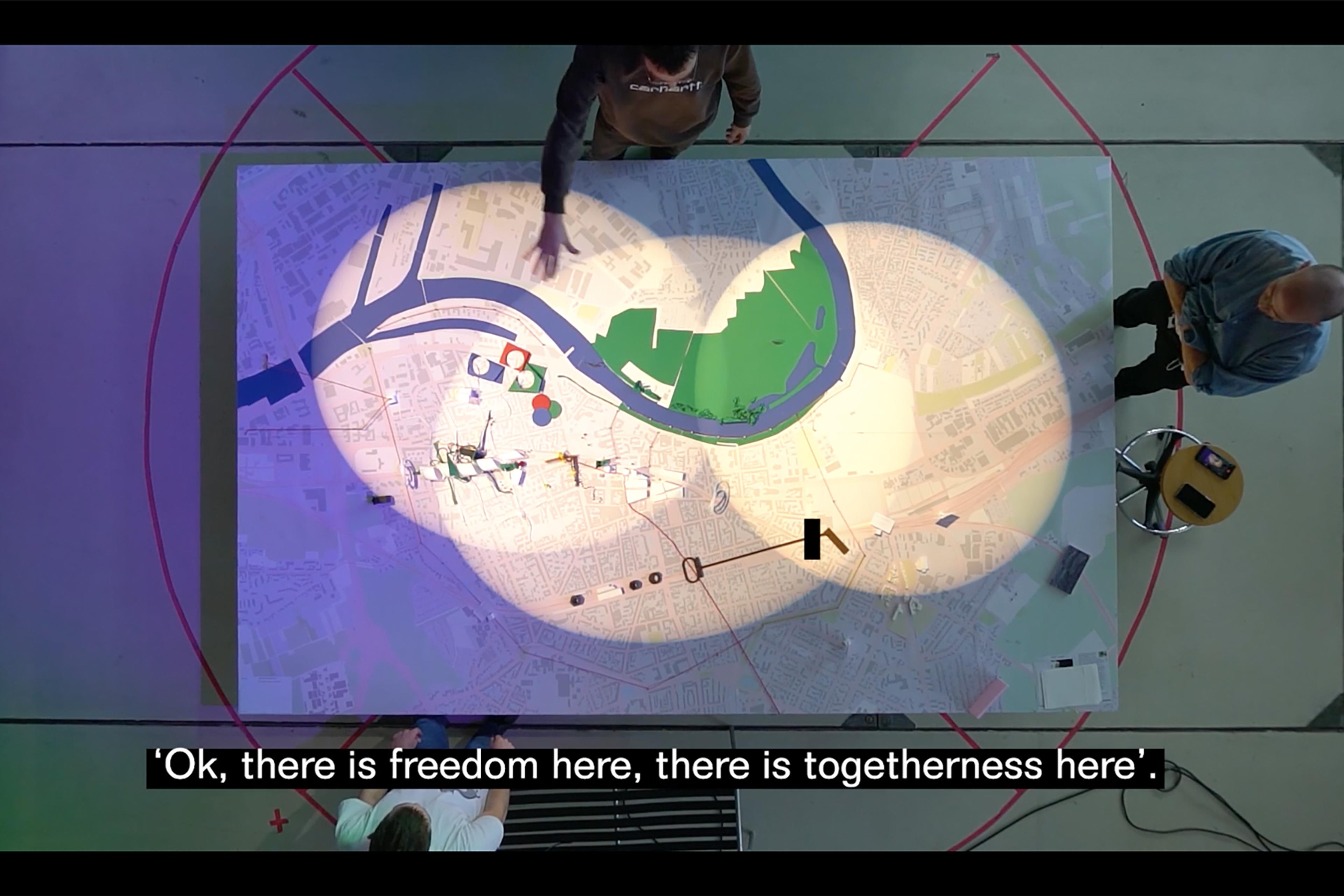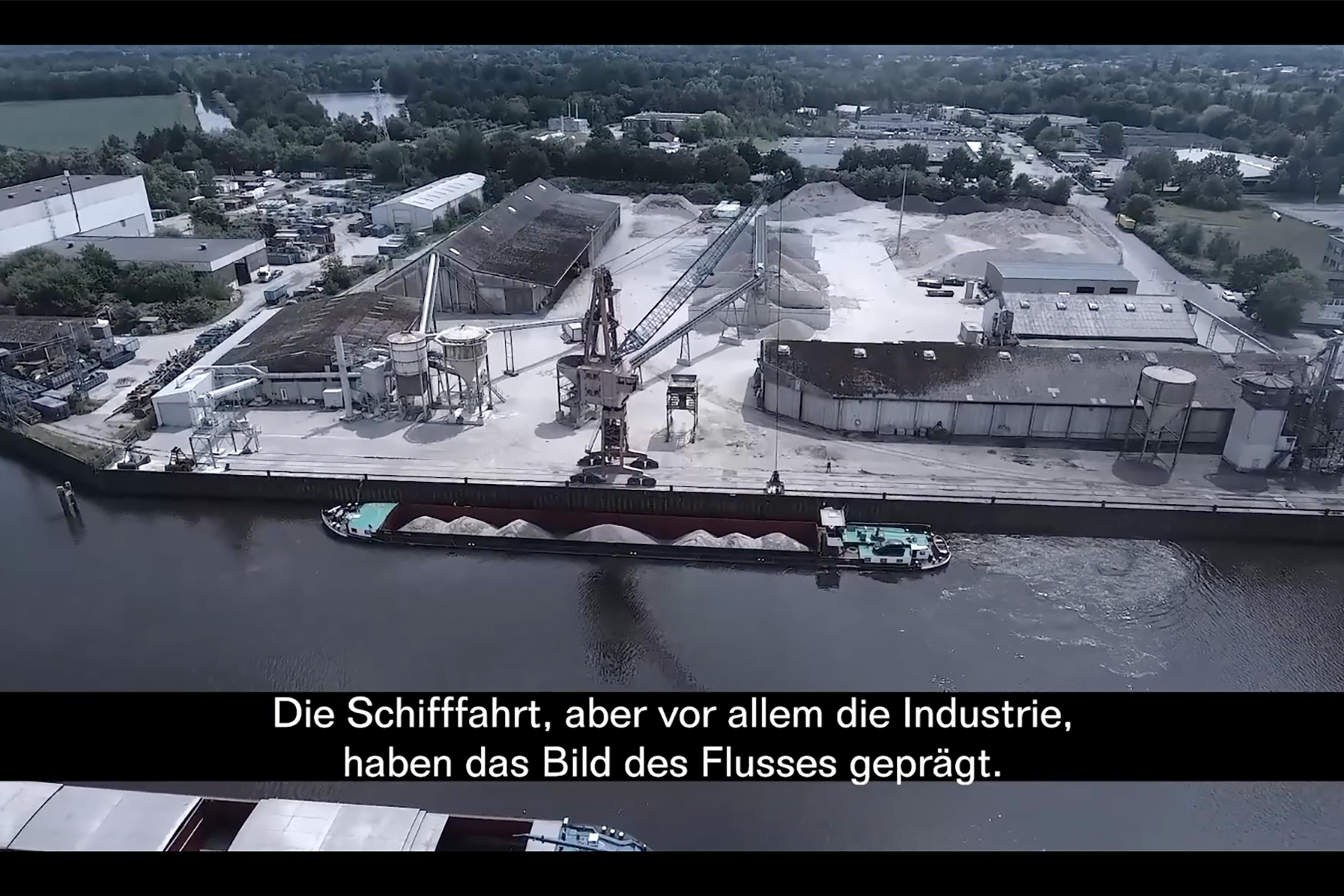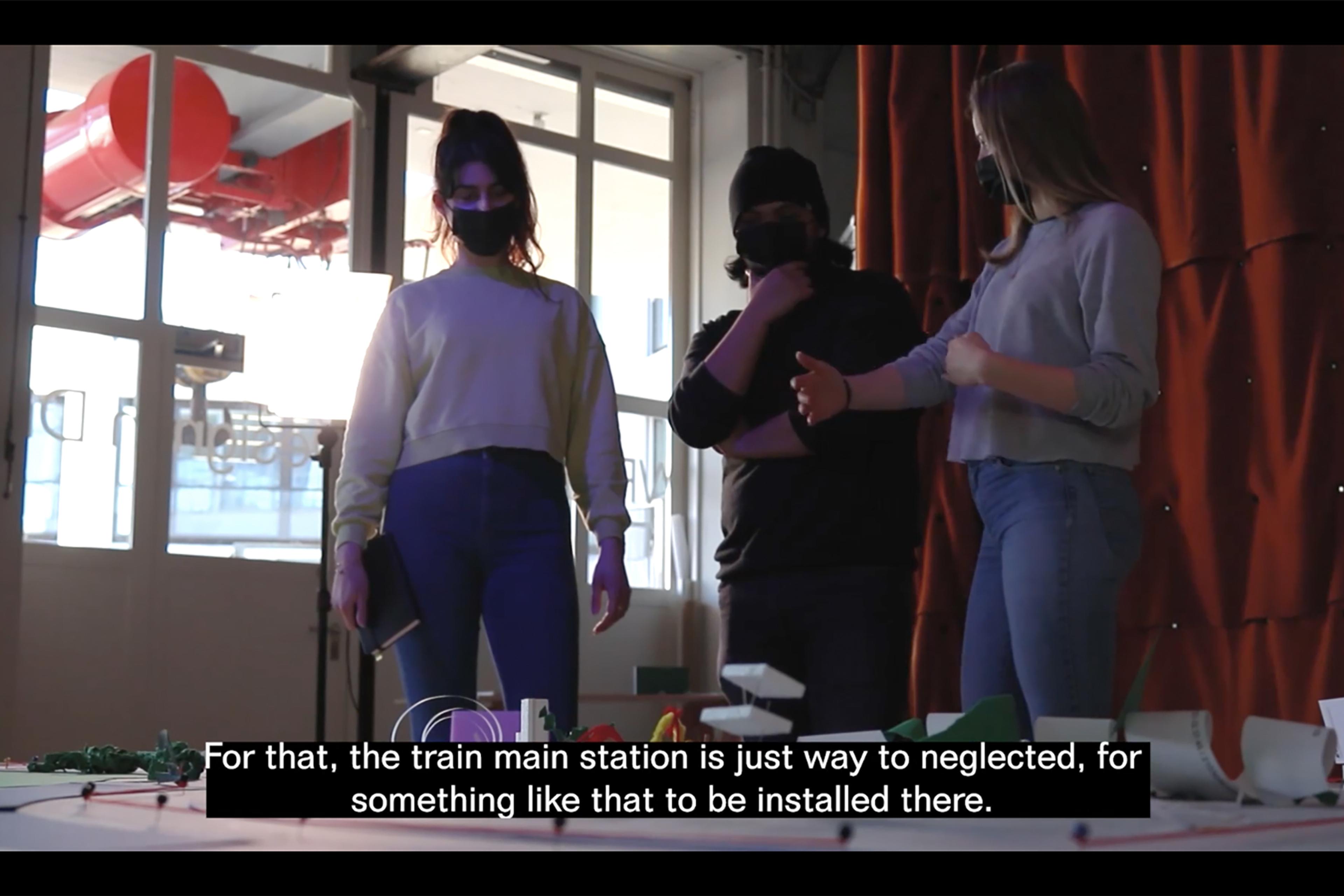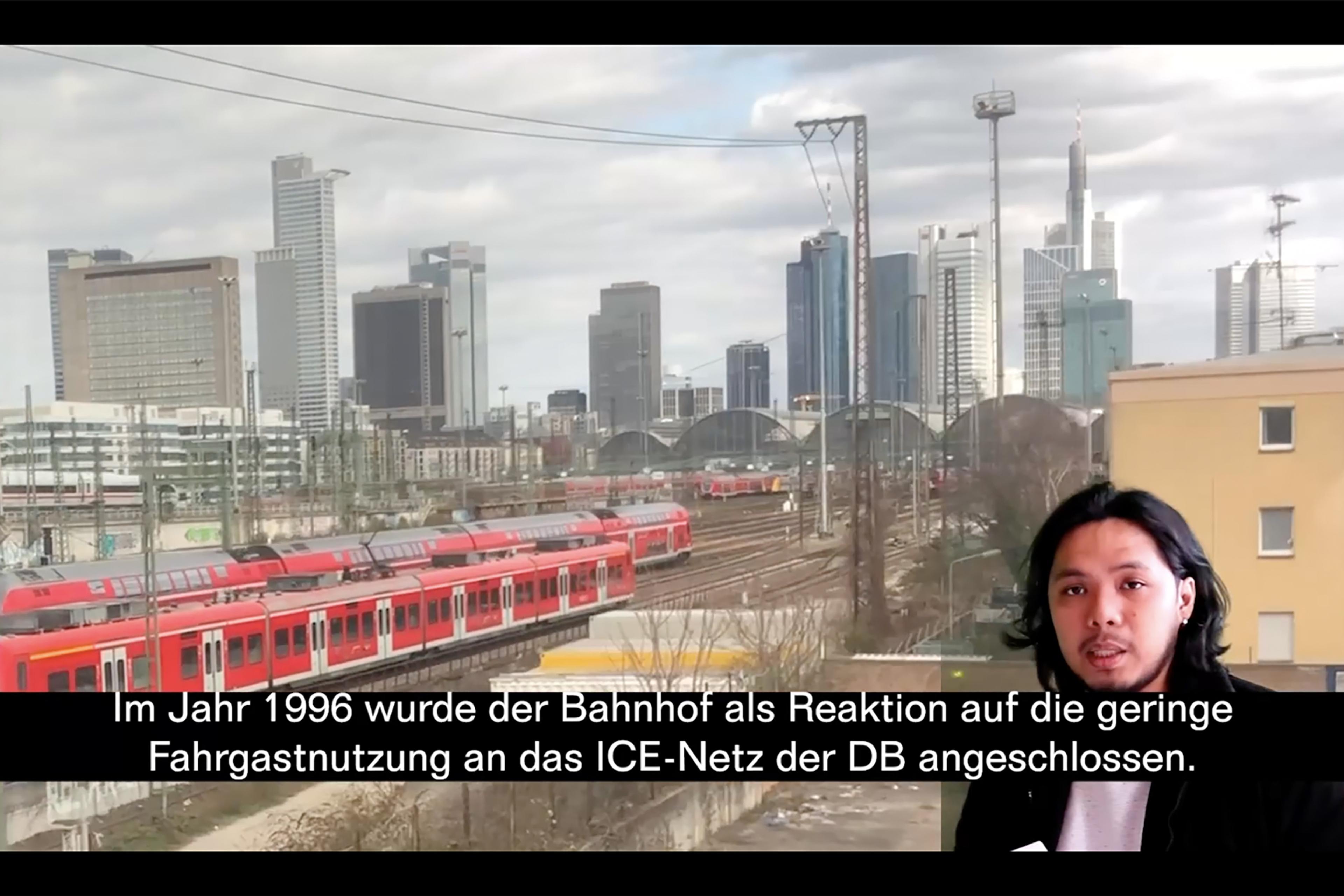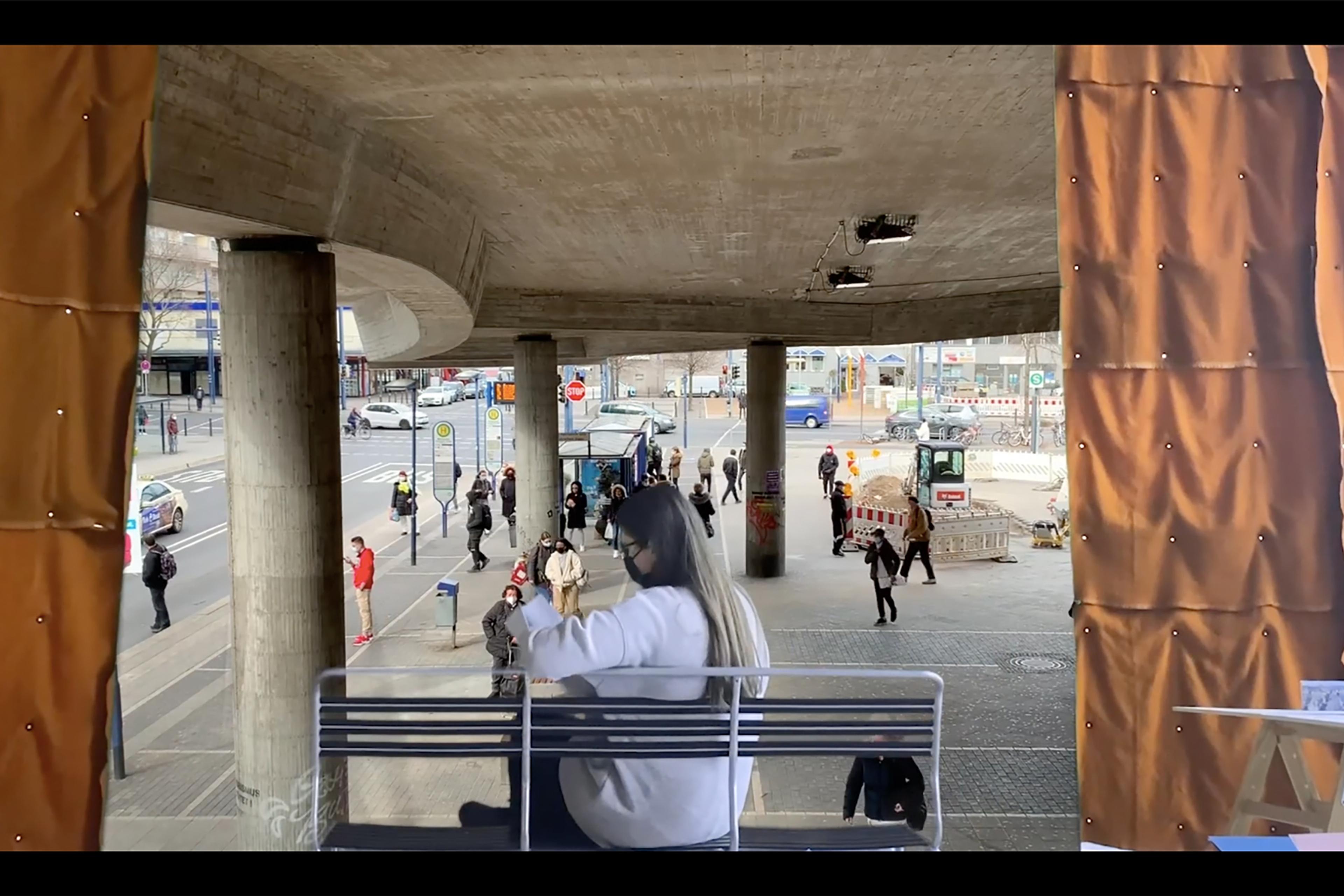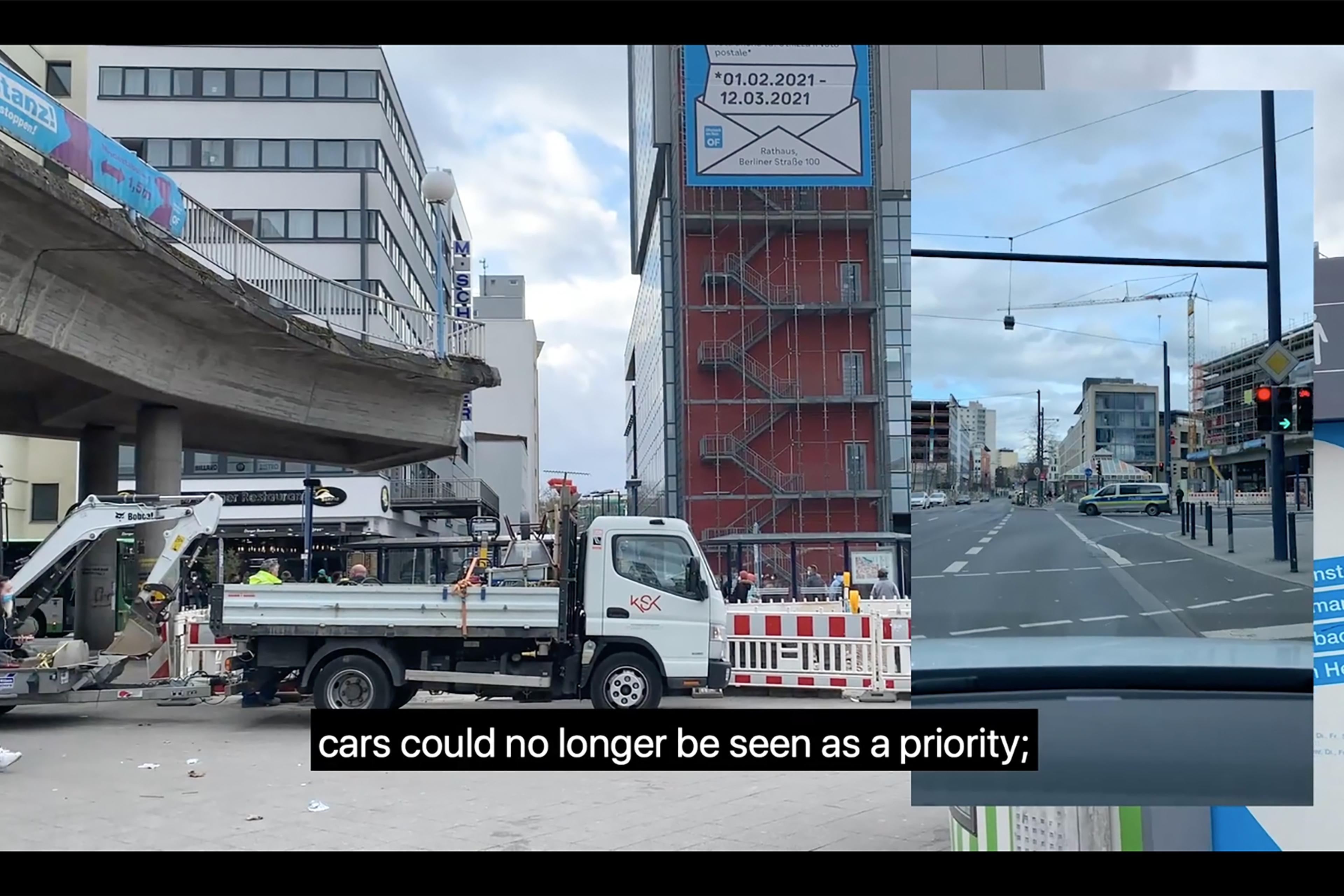Collective Movie Studio Offenbach
The NEWROPE Studio Offenbach took place during spring 2021 – the third wave of the global Covid-19 pandemic. Due to those circumstances it was the first semester which started completely online. In order to still be able to work physically and from our studio space, we transformed the Design in Dialogue Lab into a movie studio. Students were able to work there in small groups and to produce footage which served as input for the main communication tool during the first phase of the studio.
This main communication tool and the product of the first analytical phase of the studio was a collective movie. For that, students were working in smaller groups on a main storyboard, developed a set of certain editorial rules, and chose different aspects of infrastructure in Offenbach to look into. Only in the second phase students started to work in smaller groups on concrete design interventions. The collective movie formed the basis of the studio’s reflection on Adaptive Infrastructure in Offenbach.
The goal of the collective movie was to:
– Understand the infrastructural development of Offenbach and how it has shaped the city
– Understand important investment cycles and moments of transformation
– Uncover current and future urban transformations and possibilities for change
It starts from the three main infrastructures of the city: the river, a main road, and the railways. From there it tackles issues like a new masterplan for the city as an infrastructure and the question how it becomes physical, the transformation of large industrial sites and their larger integration, ca-habitation and infrastructures for non-humans, or the role and meaning of infrastructure for the identity of a city.
You can watch a short version of the movie here:
Besides, the work on the collective movie helped to develop the studio as a collective effort, to get to know each other, and to develop tools of self-organization. Students were on the one hand part of a working group, which looked into a certain dimension of infrastructure, and on the other hand they took on extra roles in the production of the collective movie. The fact that we could not go there due to Covid forced students to find ways to still get close to the place. They worked a lot with found footage, redrew places they engaged with, used digital animation, did interviews with locals, even got digital city tours, or used a green screen to enter the scene themselves.
See a long version of the movie here:
At the end of the first studio phase the collective movie was presented to the city administration of Offenbach as well as to other local stakeholders. By that it served to open up new perspectives on infrastructure and became a base for discussion. At the same time it created a rich base, and in that sense the context, for students to start designing from.
